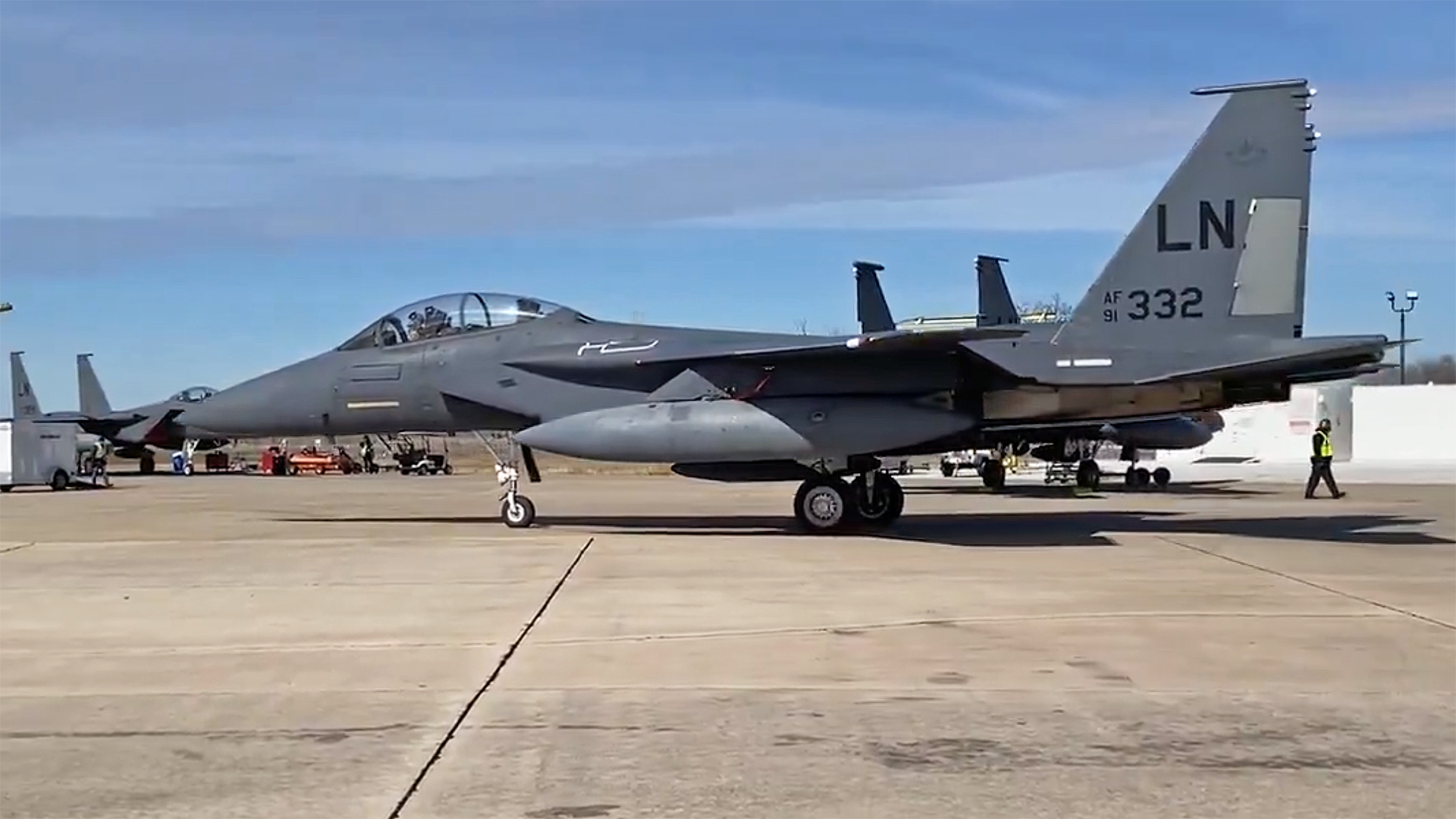A U.S. Air Force F-15E Strike Eagle equipped with a sophisticated new radar warning and electronic warfare suite that provides a major boost to its survivability has returned to its unit. As you can read about here, the AN/ALQ-250 Eagle Passive/Active Warning Survivability System, or EPAWSS, provides the F-15E with a full electronic warfare overhaul, but it has taken a long time to come online. There is also some uncertainty about the future size of the Strike Eagle fleet and how many jets might eventually get the upgrade. The same system is meanwhile also being installed on the Air Force’s new-production of F-15EX Eagle II jets.
The first operational F-15E equipped with EPAWSS was delivered to the 48th Fighter Wing at RAF Lakenheath in England on Jan. 15, the Air Force announced. Meanwhile, Boeing published a video on social media of the jet preparing to depart San Antonio, Texas, where it received the upgrade from BAE Systems, which developed EPAWSS.
“F-15 EPAWSS substantially improves pilot situational awareness with the capability to autonomously detect, identify, and locate threat systems, and then deny, degrade, and disrupt those same threats,” the Air Force said in a media release, noting that the F-15E’s original electronic warfare suite was developed to counter Cold-War era threat systems.
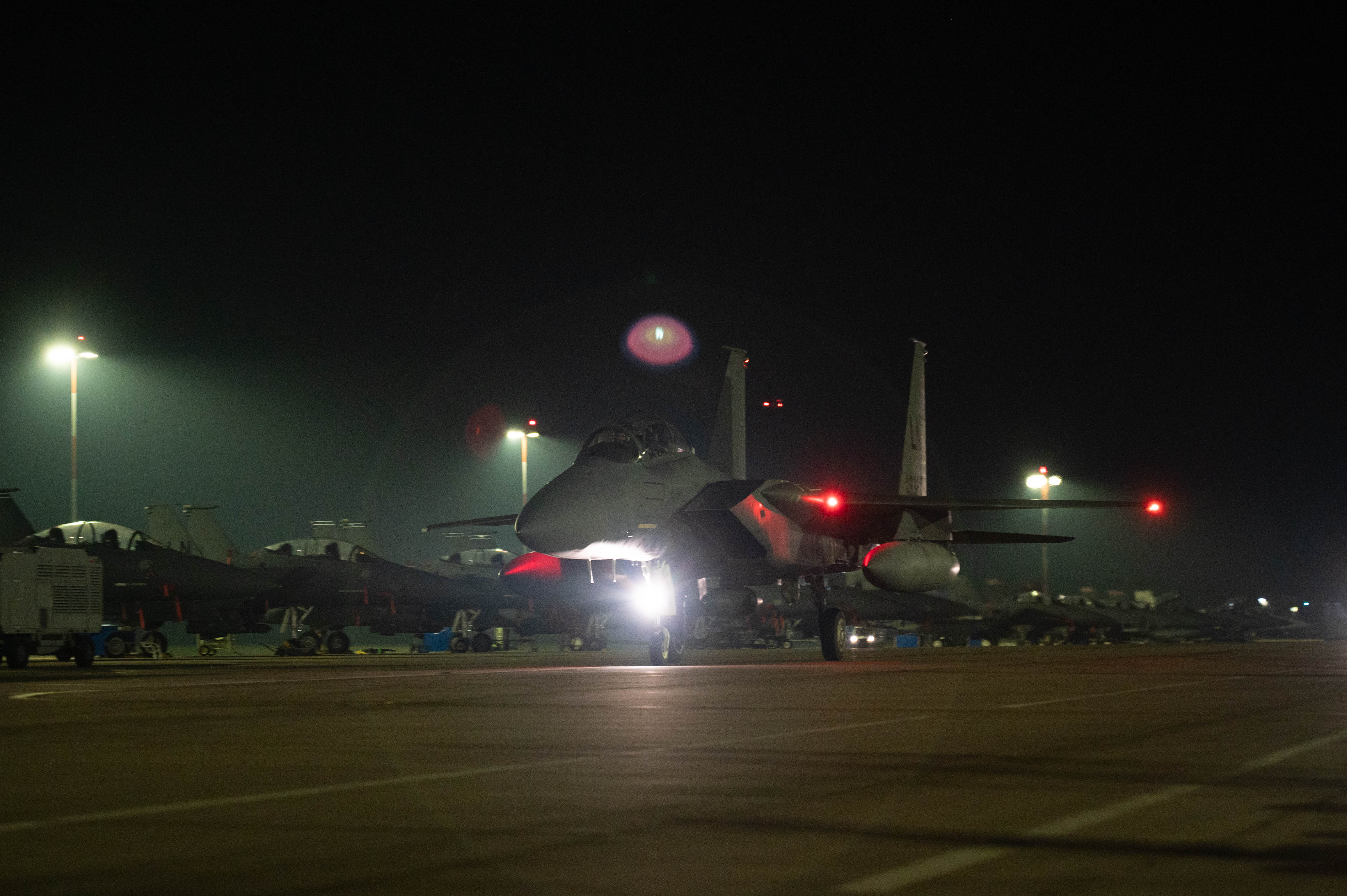
“EPAWSS significantly improves the survivability and lethality of the F-15E Strike Eagle and F-15EX Eagle II, and the fact the first modifications are delivering to our frontline fighters at RAF Lakenheath is even more critical,” said Brig. Gen. Jason Voorheis, program executive officer for the Air Force Life Cycle Management Center’s Fighters and Advanced Aircraft Directorate, which is leading the effort to field the new system. “It has taken us a long time to get to this point, but this system is vital to our 21st-century fighter force structure. Not only does this system keep our most lethal fighter in the modern fight, [but] it’s an incredible deterrent in our Great Power Competition initiative.”
In upgraded F-15Es, EPAWSS replaces the old AN/ALQ-135 Tactical Electronic Warfare System (TEWS). Compared to the standard F-15E configuration, aircraft upgraded with EPAWSS feature strengthened tailplane supporting beams, each of which has a pair of rounded antenna fairings at the end.
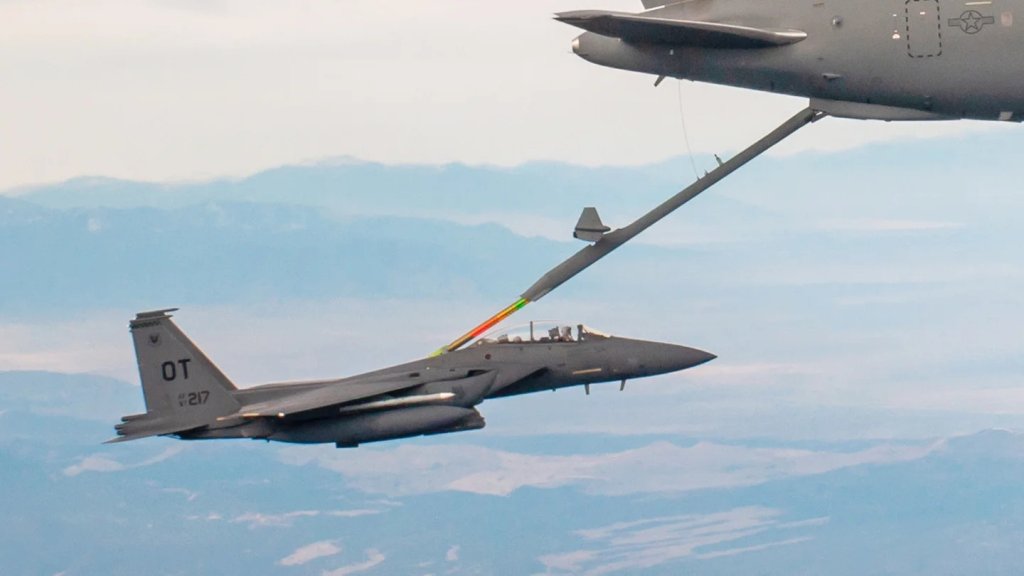
An F-15E Strike Eagle with the EPAWSS electronic warfare suite that is also found on the F-15EX. EPAWSS could be one of the systems through which Cognitive Electronic Warfare capability might be introduced to the F-15E and the F-15EX. USAF
Designed to sample the electromagnetic spectrum, identify threats, prioritize, and allocate jamming resources against them, EPAWSS is described by its manufacturer as follows:
“Providing both offensive and defensive electronic warfare options for the pilot and aircraft, EPAWSS offers fully integrated radar warning, geolocation, situational awareness, and self-protection solutions to detect and defeat surface and airborne threats in signal-dense contested and highly contested environments. Equipped with advanced electronic countermeasures, it enables deeper penetration against modern integrated air defense systems, providing rapid response capabilities to protect the aircrew.”

In an operational context, EPAWSS ensures the Strike Eagle aircrew receives timely and accurate warnings of ground-based and airborne radio-frequency (RF) threats, including their specific type and location. With this enhanced situational awareness, the crew is much better able to avoid, engage, or negate the threat. As well as alerting the crew to the threats as a defensive system, EPAWSS is able to target these threats offensively, employing countermeasures and providing targeting for effectors. The system can also be used to detect and counter incoming infrared threats, but the F-15Es do not appear to have the missile approach warning systems (MAWS) detectors installed at this time, which would help significantly in this regard.
EPAWSS might have taken a while to arrive, but there’s no doubt it was badly needed. Based on 1970s analog technology, the TEWS has long been considered obsolescent, at least when it comes to facing the kinds of threats that might be encountered in a conflict with a high-end adversary, such as China or Russia.
Since the AN/ALQ-135 was introduced, there have been enormous advances in air defense capabilities, including the proliferation of high-end surface-to-air missiles (SAMs), with performance far beyond what was envisaged when the F-15E began to enter service in the late 1980s. An F-15E going into combat against a peer or near-peer adversary today would very likely face ground-based air defense threats offering a very long range, active electronically scanned array (AESA) technology, counter-jamming capabilities, and a high degree of mobility. Even lower-tier adversaries are, in some instances, able to field systems in this class.
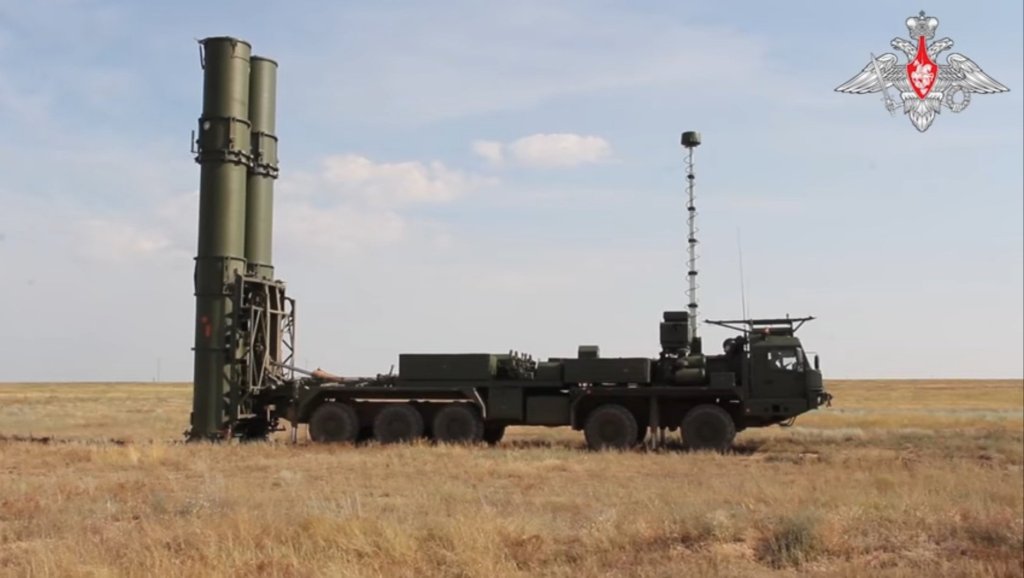
There is no sign that the pace of developments in air defense threats will slow any time soon and, with this in mind, EPAWSS is designed to be rapidly and easily updated, aided by its open-architecture setup. In this way, new capabilities can be added very rapidly to address emerging threats.
“EPAWSS is a line update item, it’s one of those things that we just need to get the appropriate data and maintenance to load updated information,” Maj. Aaron “Kamikazze” Eshkenazi of the 85th Test and Evaluation Squadron at Eglin Air Force Base, Florida, explained to TWZ in a previous interview.
Indeed, since it’s software-defined, it might even be possible to configure it to adapt to new threats — even those never detected before — in near real-time in the future, something you can read more about here.
Other advantages include reduced maintenance demands and a higher degree of reliability compared to legacy equipment. At the same time, EPAWSS is smaller and lighter than its predecessor, thanks to it being fully digital. This in turn allows for an increase in the number of chaff and flare countermeasure cartridges that can be carried.

EPAWSS “takes advantages of today’s computing, receiver, and transmitter technologies to provide a quicker, smarter response to the threats and better actionable information to the pilot,” Ed Sabat, project development lead and civilian director of operations, 772nd Test Squadron, explained in an earlier Air Force press release about the system.
In the future, EPAWSS could also become critical to the integration of Collaborative Combat Aircraft (CCA) drones and launched effects, providing intelligence on where they should be deployed for the best tactical advantage at any given time. With their far superior view of the electromagnetic battlespace, EPAWSS-equipped F-15s will be well-suited to the airborne commander or ‘quarterback’ role, also being able to share the data they hoover up with other platforms.
Further details of exactly how EPAWSS works, and the kinds of threats it can defeat remain a closely guarded secret.
EPAWSS is one of several important upgrades for the F-15E in recent years, including the Raytheon AN/APG-82 AESA radar, which is also integrated into the electronic warfare system as it is a highly capable electronic attack weapon in its own right. It has also added certain niche capabilities, such as the AN/ASQ-236 Dragon’s Eye radar pod that you can read about in this previous feature. New weapons and weapons configurations have also appeared, adding to the Strike Eagle’s versatility.
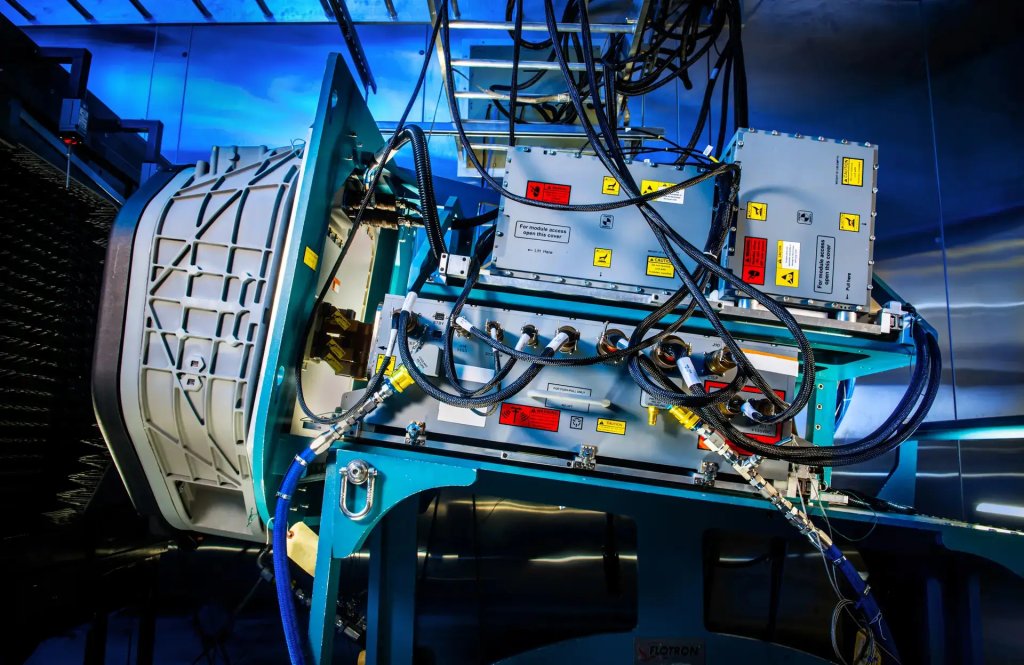
Although EPAWSS is seen as fundamental to ensure the F-15E’s survivability in the kind of contested airspace environments that the Air Force might expect to find itself fighting in the future, it’s not entirely clear what the future Strike Eagle fleet might look like.
Last summer, we reported on the effort of members of Congress to block Air Force plans to send more than half of its F-15E fleet to the boneyard in the coming years. The Air Force argues that it needs to retire older F-15Es to help free up resources for its future modernization plans, but lawmakers have been concerned about dwindling numbers of available tactical aircraft were this to happen.
Currently, the Air Force has 218 F-15Es in its inventory. Of those aircraft, 119 are powered by a pair of Pratt & Whitney F100-PW-220 turbofan engines that produce some 23,500 pounds of thrust each. The other 99 have two F100-PW-229s, which are significantly more powerful, with each engine rated at 29,000 pounds of thrust. The Air Force had hoped to retire all of the F-15Es with the -220 engines, which are also older overall, by the end of Fiscal Year 2028.
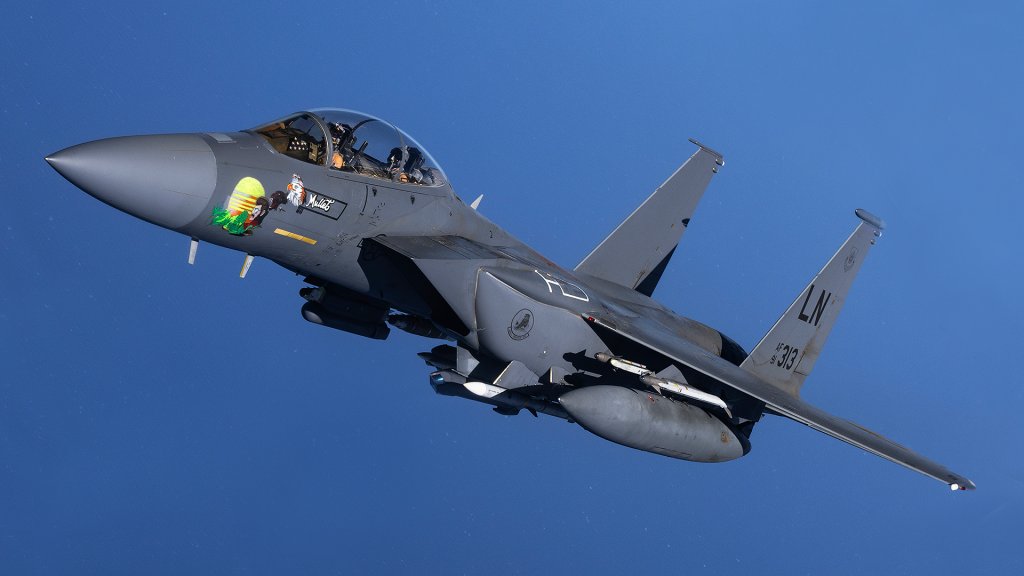
Most recently, the National Defense Authorization Act for Fiscal Year 2024 blocked the Air Force from retiring more than 68 F-15Es before the end of Fiscal Year 2029. Previously, it was reported that 99 F-15Es (those with F100-PW-229 engines) would get EPAWSS, but the new legislation could potentially see the number increase.
That the F-15E remains a highly prized asset, selected for a variety of high-profile operational missions, was underlined in April 2024 when the aircraft shot down more than 70 Iranian drones heading for Israel.
While EPAWSS is being retrofitted in existing F-15Es, the equipment is being installed in the new, more advanced F-15EX Eagle II aircraft as they are being built. However, F-15EX fleet numbers have been reduced, from the original plan for at least 144 aircraft, to what is now expected to be only 98 aircraft. EPAWSS capabilities in the F-15EX are further enhanced by the large-area display in the cockpit, providing improved visualization of the threat.
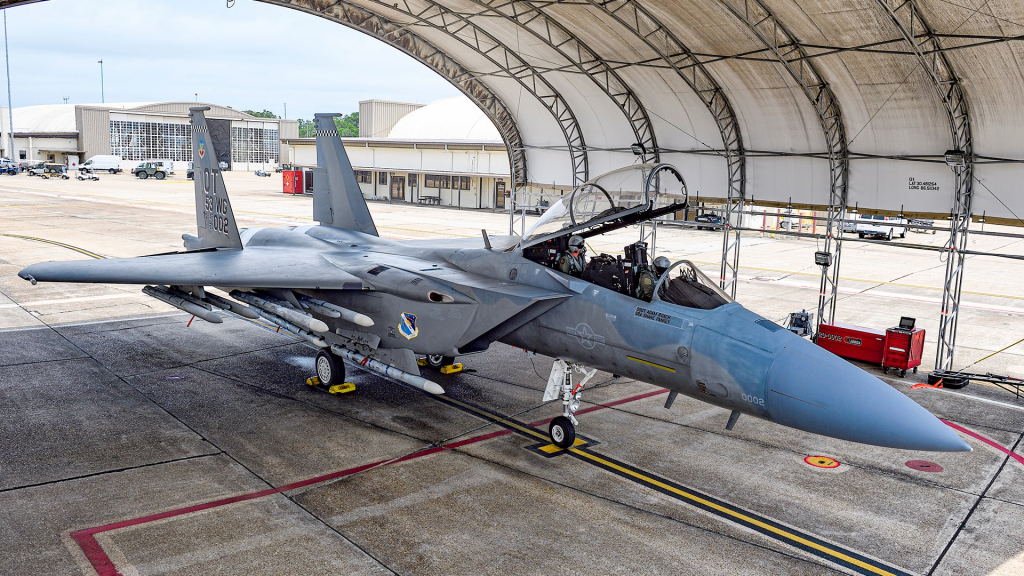
It remains to be seen exactly how many F-15Es receive EPAWSS, but those that are now returning to their units after being retrofitted with the new equipment will be prized examples among what were already some of the Air Force’s most in-demand tactical assets. With air defense threats becoming ever more diverse, complex, and unpredictable, EPAWSS will ensure these upgraded aircraft — and the new-build F-15EX — are effective for many years to come.
Contact the author: thomas@thewarzone.com
